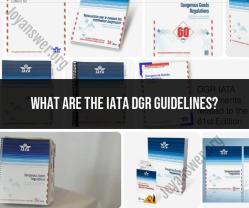Why choose the airport concrete pavement manual?
The Airport Concrete Pavement Manual (ACPM) is a comprehensive guide developed by the Federal Aviation Administration (FAA) in the United States. It provides detailed guidance, specifications, and best practices for the design, construction, maintenance, and rehabilitation of concrete pavements at airports. Here are several benefits and reasons for choosing the ACPM:
Standardization and Compliance: The ACPM serves as a standard reference document for engineers, contractors, and airport authorities, ensuring compliance with FAA regulations and industry standards. It helps maintain consistency and quality in pavement design and construction.
Technical Guidance: It offers in-depth technical guidance, including design considerations, materials selection, construction techniques, pavement evaluation, and maintenance practices specific to airport concrete pavements. This information helps engineers make informed decisions.
Updated Information: The manual is periodically updated to incorporate the latest research findings, technological advancements, and best practices in pavement engineering. It ensures that users have access to current and relevant information.
Risk Mitigation: By following the guidelines outlined in the ACPM, airport authorities and construction professionals can mitigate risks associated with pavement failures, premature deterioration, and safety concerns. It promotes durable and safe pavement solutions.
Efficiency and Cost Savings: Implementing the manual's recommendations and strategies can lead to more efficient construction processes, extended pavement life, reduced maintenance needs, and overall cost savings over the lifecycle of the pavement.
Resource for Training and Education: The ACPM serves as an educational resource for professionals entering the field of airport pavement engineering. It provides valuable insights into the complexities of designing and maintaining airport concrete pavements.
Global Relevance: While developed by the FAA, the principles and guidelines outlined in the ACPM are often considered internationally relevant and can be applied to airport pavement projects worldwide, contributing to global aviation infrastructure development.
Overall, the Airport Concrete Pavement Manual is a valuable resource that helps ensure the safety, durability, and efficiency of airport concrete pavements, making it a preferred guide for engineers, contractors, and airport authorities involved in pavement-related decision-making and projects.
Reasons to opt for the Airport Concrete Pavement Manual
There are many reasons to opt for the Airport Concrete Pavement Manual (ACPM) when designing and constructing airport pavements. Here are some of the most important:
1. Comprehensiveness: The ACPM is the most comprehensive and authoritative guide available for concrete pavement design and construction at airports. It covers everything from material selection and mix design to pavement thickness design, construction techniques, and maintenance considerations.
The 2023 ACPM edition covers the following:
- Chapter 1: Introduction and Overview
- Chapter 2: Aircraft and Design Considerations
- Chapter 3: Materials
- Chapter 4: Mix Design
- Chapter 5: Pavement Thickness Design
- Chapter 6: Construction Techniques
- Chapter 7: Joints
- Chapter 8: Drainage and Deicing
- Chapter 9: Maintenance and Rehabilitation
- Chapter 10: Pavement Evaluation and Testing
- Chapter 11: Sustainability
2. FAA-approved: The ACPM is an FAA-approved document, which means that it meets the agency's strict standards for airport pavement design. This gives engineers and contractors confidence that their designs and construction methods will comply with FAA regulations.
3. Industry best practices: The ACPM is developed by a team of experts from the Federal Aviation Administration (FAA), the American Concrete Pavement Association (ACPA), and other industry stakeholders. This ensures that the manual reflects the latest industry best practices and innovations.
4. Proven track record: Concrete pavements designed and constructed in accordance with the ACPM have a long and successful track record of performance at airports around the world. They are known for their durability, low maintenance requirements, and resistance to damage from aircraft traffic.
5. Cost-effectiveness: While the initial cost of concrete pavements may be higher than other pavement types, their lower maintenance requirements and longer lifespan can make them more cost-effective over the long term.
Additional benefits:
- Reduced environmental impact: Concrete pavements are made from recycled materials and have a lower embodied carbon footprint than other pavement types.
- Improved safety: Concrete pavements provide superior skid resistance and braking performance, which can help to reduce accidents.
- Enhanced aesthetics: Concrete pavements can be designed with a variety of finishes and colors to complement the overall aesthetics of an airport.
Overall, the Airport Concrete Pavement Manual is an essential resource for anyone involved in the design, construction, or maintenance of airport pavements. Its comprehensive scope, FAA approval, and industry best practices make it the go-to guide for ensuring safe, durable, and cost-effective pavements that can withstand the demands of modern air travel.
I hope this information is helpful. Please let me know if you have any other questions.








